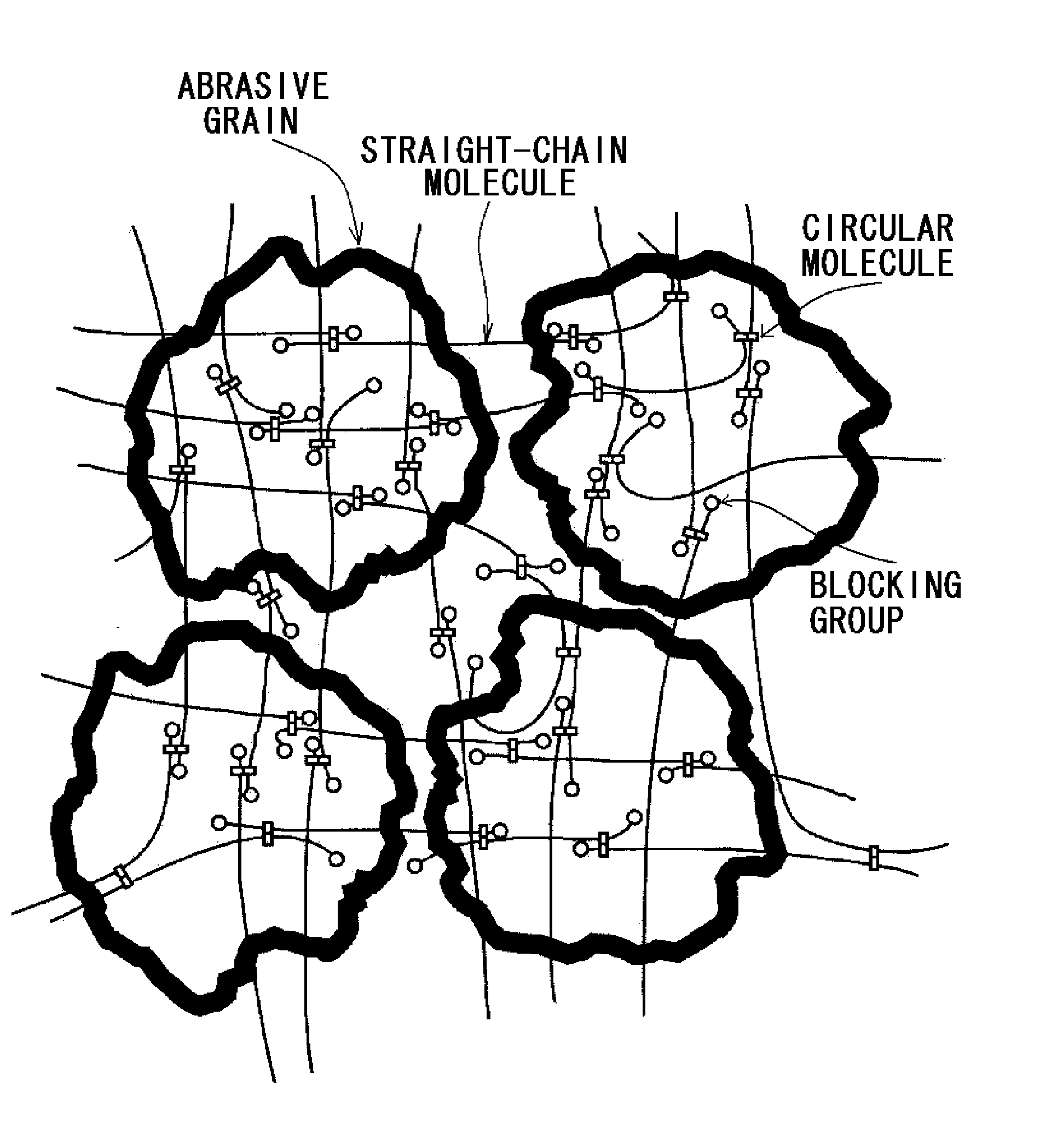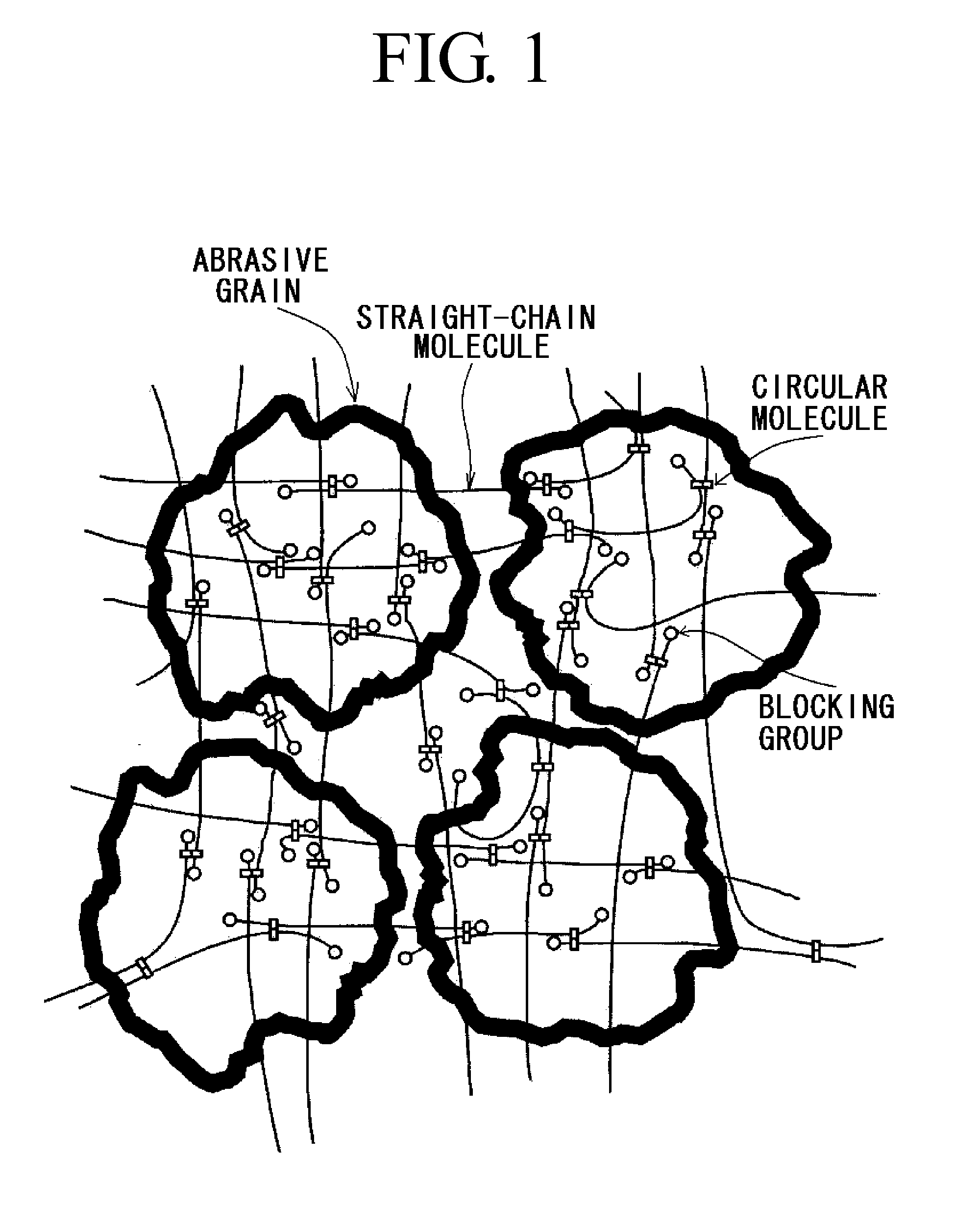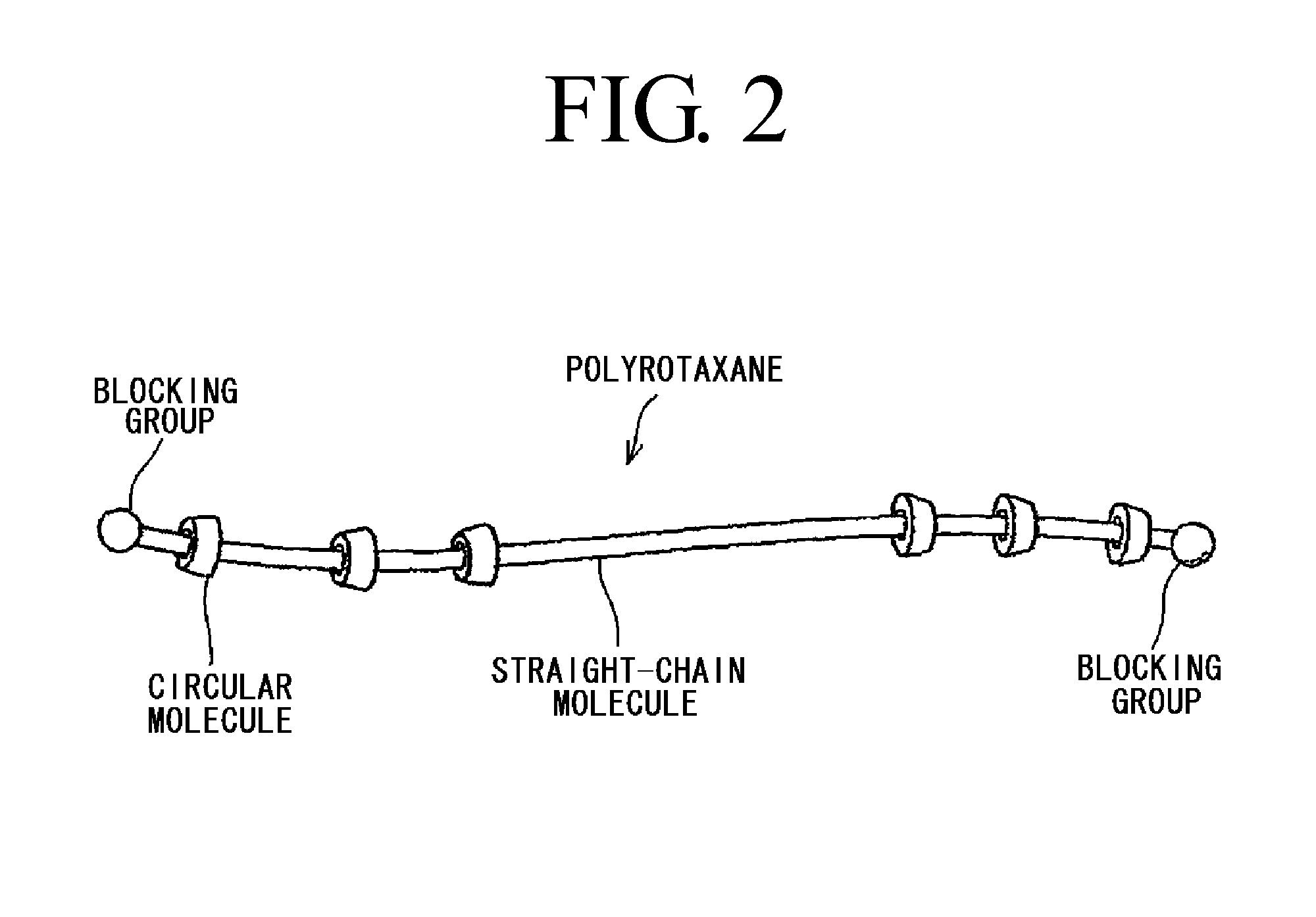Process for producing gel-like abrasive material and gel-like abrasive material
a technology of abrasives and gels, applied in the direction of other chemical processes, metal-working equipment, chemistry equipment and processes, etc., can solve the problems of obstructing the view, reducing productivity, and processing cannot be accurately performed
- Summary
- Abstract
- Description
- Claims
- Application Information
AI Technical Summary
Benefits of technology
Problems solved by technology
Method used
Image
Examples
examples
[0108]Examples of the present invention will be described below
1. Preparation of Polyrotaxane
[0109]The polyrotaxane used in this Example for producing an abrasive for blasting had polyethylene glycol (hereinafter, abbreviated as “PEG”) as the straight-chain molecule and α-cyclodextrin (hereinafter, abbreviated as “α-CD”) as the circular molecule and was obtained by the following method.
(1) Preparation of Straight-Chain Molecule (PEG)
[0110]10 g of PEG (molecular weight: 100000), 50 mg of 2,2,6,6-tetramethyl-1-piperidinyloxy radical (TEMPO), and 0.25 g of sodium bromide were dissolved in 110 mL of water.
[0111]To the obtained solution, 2.5 mL of a commercially available aqueous sodium hypochlorite solution (effective chlorine concentration: about 5%) was added, and the resulting mixture was allowed to react at room temperature while stirring.
[0112]Although the pH of the system sharply drops immediately following the addition as the reaction progresses, the preparation was performed by ...
examples of
2. Examples of Production of Gel-Like Abrasive
Example 1
[0123]A polyrotaxane solution was obtained by dissolving 250 g (8.0 wt %) of the polyrotaxane obtained in the above in 1000 mL (32.2 wt %) of an aqueous solution of 1.5 N NaOH. To this solution, 56 mL (1.8 wt %) of 1,4-butanediol diglycidyl ether (hereinafter, abbreviated as “BDGE”, a product of Tokyo Chemical Industry Co., Ltd.) was added as a crosslinking agent, followed by mixing of 1800 g (58.0 wt %) of an abrasive (grain size: #8000) including SiC as a main component. The mixture was stirred at room temperature for 28 minutes. After the stirring, the mixture was placed in a stainless steel tray and was left to stand at room temperature for 28 hours for gelation and then was placed in water for neutralization. This gel was crushed into irregular shapes of about 3 mm or less with a mixer (an apparatus having a rotary blade that rotates in a container to crush or cut a substance put in the container by rotation of the rotary b...
example 2
[0124]200 mL of water was added to 450 g (57.8 wt %) of an abrasive (grain size: #8000) including SiC as a main component, and the mixture was stirred at room temperature for 15 minutes to form a slurry. To the slurry, 62.5 g (8.0 wt %) of the polyrotaxane was added, followed by stirring at room temperature for 14 minutes. Then, 50 mL of an aqueous solution of 4 N NaOH (the total amount of the aqueous NaOH solution: 250 mL, 32.1 wt %) was added thereto, followed by stirring for 16 minutes. Then, 16 mL (2.1 wt %) of BDGE was added thereto, followed by stirring for 7 minutes. This was placed in a stainless steel tray and was left to stand at room temperature for 24 hours for gelation and then was placed in water for neutralization. This gel was crushed into irregular shapes of about 3 mm or less with a mixer, followed by washing with water to obtain a gel-like abrasive.
PUM
| Property | Measurement | Unit |
|---|---|---|
| diameter | aaaaa | aaaaa |
| weight ratio | aaaaa | aaaaa |
| grain size | aaaaa | aaaaa |
Abstract
Description
Claims
Application Information
 Login to view more
Login to view more - R&D Engineer
- R&D Manager
- IP Professional
- Industry Leading Data Capabilities
- Powerful AI technology
- Patent DNA Extraction
Browse by: Latest US Patents, China's latest patents, Technical Efficacy Thesaurus, Application Domain, Technology Topic.
© 2024 PatSnap. All rights reserved.Legal|Privacy policy|Modern Slavery Act Transparency Statement|Sitemap



